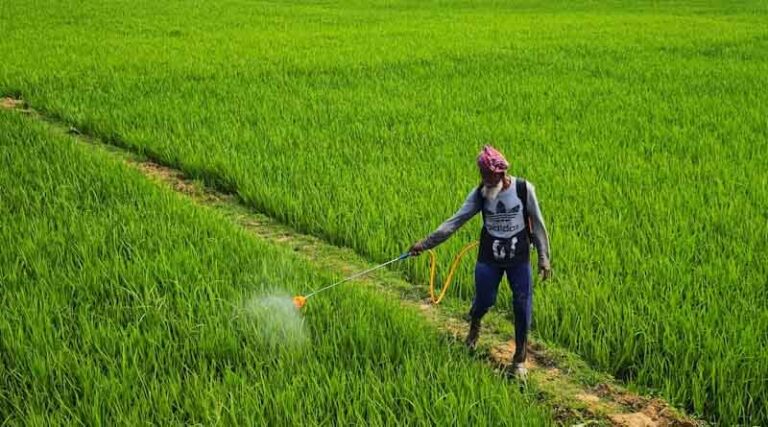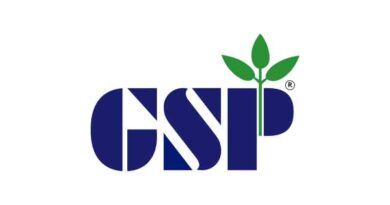
India Pesticide Ban List 2025: Complete Details of Banned, Restricted and Refused Agrochemicals
29 August 2025, New Delhi: The Directorate of Plant Protection, Quarantine and Storage under the Department of Agriculture and Farmers Welfare, Government of India, has released the updated list of pesticides that are banned, refused registration, or restricted in use across the country. The revised list, effective as of 31st March 2024, reflects India’s continuing efforts to balance agricultural productivity with food safety, environmental concerns, and public health.
The list includes pesticides that are completely banned for manufacture, import and use, certain formulations that may still be manufactured for export, pesticides whose registration has been refused due to safety or efficacy concerns, and those restricted for use in specific crops, commodities, or under regulated conditions. This publication is part of Global Agriculture’s commitment to regularly update its database and provide accurate information for its readers, supporting sustainable food security worldwide.
I. Pesticides/Formulations Banned in India
A. Pesticides Banned for Manufacture, Import and Use
The government has prohibited the following pesticides and formulations. Many of these have been phased out progressively over the last three decades through Gazette notifications, Supreme Court orders, and Registration Committee decisions.
| S. No. | Name of Pesticide | Notification/Order |
|---|---|---|
| 1 | Alachlor | S.O. 3951(E), 08.08.2018 |
| 2 | Aldicarb | S.O. 682(E), 17.07.2001 |
| 3 | Aldrin | – |
| 4 | Benzene Hexachloride | – |
| 5 | Benomyl | S.O. 3951(E), 08.08.2018 |
| 6 | Calcium Cyanide | – |
| 7 | Carbaryl | S.O. 3951(E), 08.08.2018 |
| 8 | Chlorbenzilate | S.O. 682(E), 17.07.2001 |
| 9 | Chlordane | – |
| 10 | Chlorofenvinphos | – |
| 11 | Copper Acetoarsenite | – |
| 12 | Diazinon | S.O. 3951(E), 08.08.2018 |
| 13 | Dibromochloropropane (DBCP) | S.O. 569(E), 25.07.1989 |
| 14 | Dichlorovos | S.O. 3951(E), 08.08.2018 |
| 15 | Dicofol | S.O. 4294(E), 03.10.2023 |
| 16 | Dieldrin | S.O. 682(E), 17.07.2001 |
| 17 | Dinocap | S.O. 4294(E), 03.10.2023 |
| 18 | Endosulfan | Supreme Court order, 2011 (final 2017) |
| 19 | Endrin | – |
| 20 | Ethyl Mercury Chloride | – |
| 21 | Ethyl Parathion | – |
| 22 | Ethylene Dibromide (EDB) | S.O. 682(E), 17.07.2001 |
| 23 | Fenarimol | S.O. 3951(E), 08.08.2018 |
| 24 | Fenthion | S.O. 3951(E), 08.08.2018 |
| 25 | Heptachlor | – |
| 26 | Lindane (Gamma-HCH) | – |
| 27 | Linuron | S.O. 3951(E), 08.08.2018 |
| 28 | Maleic Hydrazide | S.O. 682(E), 17.07.2001 |
| 29 | Menazon | – |
| 30 | Methomyl | S.O. 4294(E), 03.10.2023 |
| 31 | Methoxy Ethyl Mercury Chloride | S.O. 3951(E), 08.08.2018 |
| 32 | Methyl Parathion | S.O. 3951(E), 08.08.2018 |
| 33 | Metoxuron | – |
| 34 | Nitrofen | – |
| 35 | Paraquat Dimethyl Sulphate | – |
| 36 | Pentachloro Nitrobenzene (PCNB) | S.O. 569(E), 25.07.1989 |
| 37 | Pentachlorophenol | – |
| 38 | Phenyl Mercury Acetate | – |
| 39 | Phorate | S.O. 3951(E), 08.08.2018 |
| 40 | Phosphamidon | S.O. 3951(E), 08.08.2018 |
| 41 | Sodium Cyanide (insecticidal use) | S.O. 3951(E), 08.08.2018 |
| 42 | Sodium Methane Arsonate | – |
| 43 | Tetradifon | – |
| 44 | Thiometon | S.O. 3951(E), 08.08.2018 |
| 45 | Toxaphene (Camphechlor) | S.O. 569(E), 25.07.1989 |
| 46 | Triazophos | S.O. 3951(E), 08.08.2018 |
| 47 | Tridemorph | S.O. 3951(E), 08.08.2018 |
| 48 | Trichloroacetic Acid (TCA) | S.O. 682(E), 17.07.2001 |
| 49 | Trichlorfon | S.O. 3951(E), 08.08.2018 |
B. Pesticides Banned for Use but Allowed for Manufacture/Export
| S. No. | Name of Pesticide | Notification |
|---|---|---|
| 1 | Captafol 80% Powder | S.O. 679(E), 17.07.2001 |
| 2 | Dichlorvos | S.O. 1196(E), 20.03.2020 |
| 3 | Nicotin Sulfate | S.O. 325(E), 11.05.1992 |
| 4 | Phorate | S.O. 1196(E), 20.03.2020 |
| 5 | Triazophos | S.O. 1196(E), 20.03.2020 |
C. Pesticides Withdrawn
These may be reinstated if complete safety data is submitted and approved.
- Dalapon
- Ferbam
- Formothion
- Nickel Chloride
- Paradichlorobenzene (PDCB)
- Simazine
- Sirmate (S.O. 2485(E), 24.09.2014)
- Warfarin (S.O. 915(E), 15.06.2006)
II. Pesticides Refused Registration
The following pesticides have not been granted registration in India due to toxicity, health, or environmental concerns:
- 2,4,5-T
- Ammonium Sulphamate
- Azinphos Ethyl, Azinphos Methyl
- Binapacryl
- Calcium Arsenate
- Carbophenothion
- Chinomethionate (Morestan)
- Dicrotophos
- EPN
- Fentin Acetate, Fentin Hydroxide
- Lead Arsenate
- Leptophos (Phosvel)
- Mephosfolan
- Mevinphos (Phosdrin)
- Thiodemeton/Disulfoton
- Vamidothion
III. Pesticides Restricted for Use in India
Certain pesticides continue to be allowed under strict limitations, crop-specific bans, or government-supervised usage. Examples include:
- Aluminium Phosphide – use only by government-approved experts.
- Captafol – only as seed dresser, foliar spray banned.
- Carbofuran – only 3% CG formulation permitted.
- Chlorpyriphos – banned on Ber, Citrus, Tobacco.
- DDT – only for limited public health use, not agriculture.
- Monocrotophos – banned on vegetables; 36% SL phased out from 2023.
- Malathion – banned on sorghum, pea, soybean, and several fruits/vegetables.
- Mancozeb – banned on Guava, Jowar, Tapioca.
- Methyl Bromide – restricted to supervised fumigation only.
Significance of the Update
Experts believe that these regulatory measures are in line with global moves to reduce reliance on hazardous pesticides, particularly those flagged under the Stockholm Convention on Persistent Organic Pollutants (POPs).
For Indian farmers, the government emphasizes the need to adopt safer alternatives and Integrated Pest Management (IPM) practices. The agrochemical industry, meanwhile, is expected to accelerate investment in bio-pesticides and newer, safer molecules.
With these restrictions and ban, India aims to strike a balance between ensuring crop protection, safeguarding farmer health, and meeting export market requirements that increasingly demand residue-free and environmentally safe produce.
Also Read: KisanKraft Marks 20 Years of Service to Small Farmers in India
📢 If You’re in Agriculture, Make Sure the Right People Hear Your Story.
From product launches to strategic announcements, Global Agriculture offers unmatched visibility across international agri-business markets. Connect with us at pr@global-agriculture.com to explore editorial and advertising opportunities that reach the right audience, worldwide.






